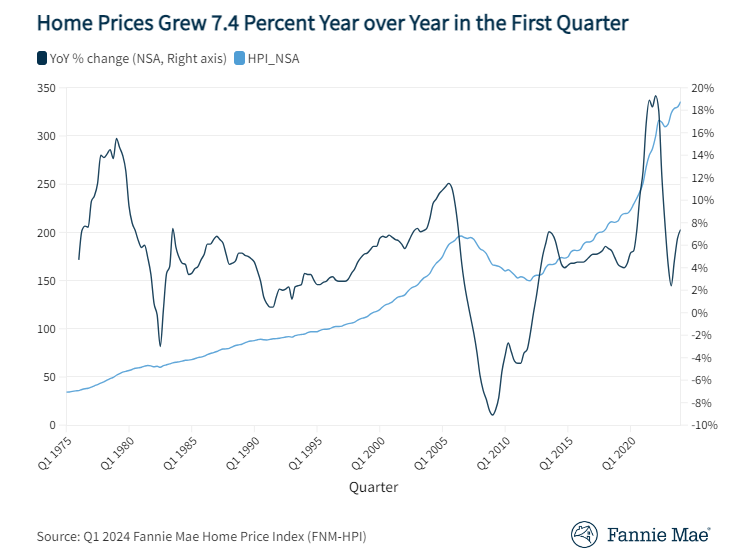
TransUnion: Mortgage Originations Near Record Low, Balances Hit Record High

In Q4 2022, originations fell 65% year over year, the largest decline since TransUnion began tracking it.
- Purchases as share of mortgage origination up 30%, year over year.
- Refinance originations down 89% year-over-year, from 1.3 million units to 143,000 units.
- Account-level mortgage delinquencies increase for the fourth consecutive month.
- Americans’ tappable home equity almost four times the size of Japan’s annual GDP.
Consumers are increasingly turning to credit to manage their household budgets, leading to record- or near-record high balances in credit cards and unsecured loans, while the volume of mortgages declined sharply, according to a new report from TransUnion.
The credit reporting agency on Thursday released its Credit Industry Insights Report (CIIR) for the first quarter of 2023, which explores the latest credit trends for credit cards, unsecured personal loans, mortgages, and auto loans.
Mortgages
According to the report, fourth-quarter mortgage originations neared record lows, while total mortgage balances hit a record high of $11.8 trillion in the first quarter.
In the fourth quarter of 2022, mortgage originations fell 65% year over year — the largest decline in originations since TransUnion began tracking the data mid-2012 — as originations dropped to 1 million units, down from 2.9 million a year earlier, and 3.9 million originations in the fourth quarter of 2020.
TransUnion said originations are viewed one quarter in arrears to account for reporting lag.
Purchases comprised a whopping 86% of mortgage origination volume in the fourth quarter of 2022, with 900,000 units. By unit volume, that's a 45% decrease year over year (1.6 million units). However, by share of total mortgage originations, purchase volume has risen more than 30% year over year.
Unsurprisingly, as interest rates and purchase shares have bloomed, refinances have withered. Refis are down 89% year-over-year, from 1.3 million units to 143,000 units, the lowest level to date. The steep decline was driven by the dramatic decrease in rate and term refinance originations, down by 96% year over year, as well as an 83% decline year over year in cash-out refinances.
Conversely, HELOC originations have risen 7% year over year to reach 299,000 units in the fourth quarter of 2022. Home equity loan originations also increased, jumping 31% year over year to reach 264,000 units.
“The relatively higher interest rate environment has depressed mortgage refinancing in particular,” said Joe Mellman, senior vice president and mortgage business leader at TransUnion. “This, coupled with the increases observed in HELOC and home equity loan originations, indicates that homeowners are still interested in tapping their home equity, even at higher interest rates.
$19.5T In Tappable Equity
The most recent data TransUnion has analyzed shows American homeowners are sitting on $19.5 trillion of tappable home equity.
“That’s not total home equity, that’s just home equity of consumers who have a credit profile that would qualify and have enough ownership in their homes that wouldn’t exceed the 80% combined loan-to-value ratio,” Mellman said.
“To put that into perspective,” he continued, “Japan is the world’s third-largest economy, and that’s about four times their annual GDP. Consumers are sitting on an astronomical amount of home equity that they could potentially tap into, particularly to help debt consolidation.”
Independent of the first quarter 2023 CIIR, surveys TransUnion has conducted with consumers show the No. 1 reason homeowners are tapping into their home equity is for home improvements. The second most common use is to pay off higher-interest-rate, non-mortgage debt — such as credit cards, personal loans, and even auto loans — with APRs “quite high” compared to a couple of years ago, Mellman said.
But as interest in home-equity products increases, Mellman said he believes lenders should know that it’s not just mortgage holders who are tapping home equity.
“It’s also consumers that own their property free and clear. That is a group of consumers that oftentimes are not in the conversation," he said. "While they don’t quite do the volume that mortgage holders do, they still do significant volume on starting to tap their home equity. It’s an important consideration to have for the lending community.”
The average balance of new mortgage loans increased to $328,925 in the first quarter, up 3.6% from a year earlier ($317,388) and 11.7% from the first quarter of 2021 ($294,411). This is a somewhat notable increase given that the average balance of new mortgage loans increased a nominal 0.005% from the first quarter of 2020 ($292,754) to the first quarter of 2021 ($294,411).
The price increases have begun to moderate, Mellman said, and are projected to continue to moderate.
“It’s a supply and demand equation, ultimately...," Mellman said. "We’re right in the middle of interest rates going up dramatically from where they were — historically still not high levels, but higher than they were — and we have not seen home prices moderate to the same extent. So we are having an affordability hit to the average consumer.”
He added, “The supply piece is the other piece that is very limiting right now. People are not leaving their homes. They’re locked into a low interest rate. I call it the ‘golden handcuff problem.’”
Mellman admittted he’s one of those people. “I’m very reluctant to sell, get into a new house that has appreciated in price, is going to be more expensive, and I’m going to more than double my interest payment. ... That’s a hard equation.”
Meanwhile, account-level mortgage delinquencies (those 60+ days past due) increased for the fourth consecutive month, up 12% to 0.98% in the first quarter.
While these remain very low levels historically, the trend “is worthy of continued monitoring in 2023 as macroeconomic volatility and increased cost-of-living may be starting to affect delinquencies,” Mellman said.
Unsecured Personal Loans
Rising delinquency rates in 2022 led lenders to tighten their lending criteria and focus more on lower-risk consumers, which largely explains year-over-year declines in fourth-quarter 2022 originations and decelerating growth in total unsecured personal loan balances.
Unsecured personal loan balances were up 26.3% year over year, the report found. Subprime saw the highest growth in balances at 40%, while prime plus saw the slowest growth in balances at just below 20%.
The average balance per consumer in the first quarter rose to $11,281, its highest level on record.
The year-over-year decline in originations for unsecured personal loans was largely driven by the prime and below-risk tiers, each of which demonstrated negative year-over-year growth. Unsecured personal loan originations for subprime borrowers experienced the most significant decline, down 18.2% year over year..
Borrower-level 60+ days past due (DPD) delinquencies increased in the first quarter to 3.91%, a 5.4% decrease from the previous quarter, but a 20.5% increase year over year.
Liz Pagel, senior vice president of consumer lending at TransUnion, said investors will continue to express a preference "for lower risk, shorter duration loans” in response to higher interest rates and elevated delinquencies. “The shift towards lower risk consumers will be apparent,” she said.
Credit Cards
Americans’ total credit card balance dropped from $930 million in the fourth quarter of 2022 to $917 million in the first quarter of this year (-1.5%), though year-over-year growth was nearly 20%. Average debt per borrower in the first quarter was $5,733, a $700 increase year over year.
Among subprime borrowers, 90+ DPD delinquency rates rose to 12.42%, up 9.44% from a year ago. New account originations dropped 3.9% year over year and 4.3% quarter over quarter driven largely by a 19% year-over-year decline in subprime originations.
According to Michele Raneri, vice president of U.S. research and consulting at TransUnion, “It remains to be seen whether these balances will continue to grow in the near-term, or if growth will slow as consumers moderate their pace of borrowing and if lenders more closely scrutinize consumers and potential risk when determining to whom they lend moving forward.”




